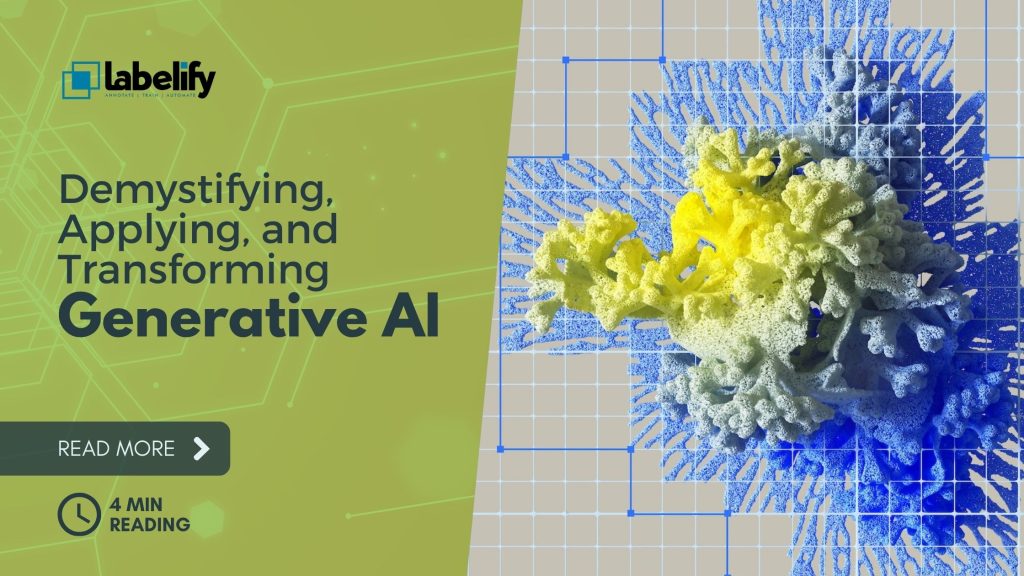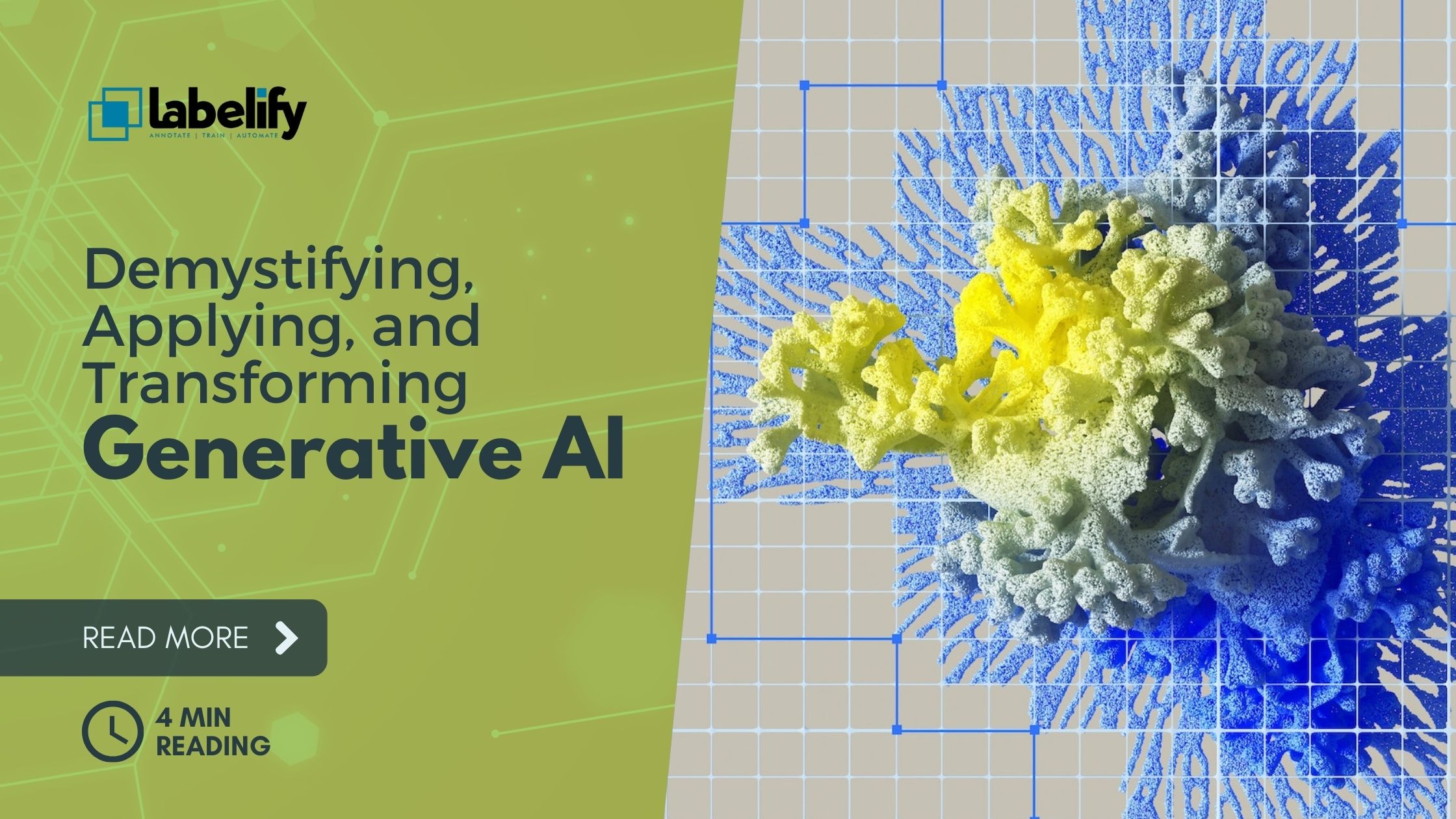
Welcome to our journey into the fascinating realm of generative AI!
We’ve witnessed a digital content revolution and experienced firsthand the impact of this extraordinary subset of artificial intelligence.
By harnessing the power of machine learning models like GANs, GPT language models, and VAEs, generative AI empowers us to create diverse content types, ranging from images to text and even audio.
Join us as we delve into the techniques, applications, and profound impact of generative AI, unlocking limitless possibilities in various fields.
Let’s embark on this exciting exploration together!
Klíčové věci
Generative AI is revolutionizing how we create and interact with digital content. Techniques like GANs, Transformers, and VAEs allow us to generate realistic human faces, synthetic data for ML training, and cutting-edge generative AI models.
The applications of generative AI are diverse, ranging from content generation to aiding in software engineering and writing tasks. However, we must also address challenges such as copyright, accuracy, bias, and data requirements.
The impact of generative AI is profound and will continue to shape the future of technology.
Understanding Generative AI Basics
Generative AI basics encompass the fundamental concepts and techniques that free us in creating and generating digital content through groundbreaking machine learning algorithms.
These algorithms, like Generative Adversarial Networks (GANs) and transformer-based models, empower us to unleash the full potential of generative AI. With GANs, we can unlock our creativity and produce stunning visual content, from images to videos.
Moreover, generative AI models have paved the way for innovative music production by utilizing deep learning techniques. By harnessing the power of generative AI algorithms, we can compose unique melodies, harmonies, and rhythms that push the boundaries of musical creativity.
The possibilities are endless as we continue to explore and refine generative AI models for music production, giving artists and musicians the freedom to express themselves in unprecedented ways.
Techniques in Generative AI
We often use various techniques in generative AI to transform how digital content is created and interacted with. Two prominent techniques in generative AI are Generative Adversarial Networks (GANs) and Transformers.
GANs are unsupervised machine learning algorithms that consist of a generator and a discriminator. They’re widely used for image synthesis, style transfer, image super-resolution, and more.
On the other hand, Transformers have revolutionized natural language processing and have played a crucial role in developing large language models like GPT-3 and GPT-4.
Variational Autoencoders (VAEs) are also utilized in generative AI, especially for image synthesis. VAEs combine deep learning and probabilistic graphical modeling to create generative models with continuous and meaningful representations.
Real-World Applications of Generative AI
Generative AI is revolutionizing various industries with its wide range of real-world applications. Let’s explore four visionary examples of how generative AI is transforming these industries:
- Generative AI in Healthcare: Picture this – a future where generative AI models generate new drug molecules and predict disease progression. These models have the potential to revolutionize medicine by assisting in drug discovery and creating personalized treatment plans.
- Generative AI in the Fashion Industry: In the realm of fashion, generative AI empowers designers to create unique and innovative designs without any constraints. AI models can generate new clothing designs, patterns, and even suggest personalized fashion choices based on individual preferences.
- Generative AI in Art: The world of art has embraced AI-generated masterpieces. Artists can leverage generative AI to create groundbreaking and thought-provoking artwork, pushing the boundaries of creativity.
- Generative AI in Custom Software Engineering: By automating the creation of custom software, generative AI models generate code based on natural language descriptions. This liberates software engineers from repetitive tasks, allowing them to focus on complex and creative problem-solving.
These examples provide just a glimpse of the immense potential that generative AI holds in transforming industries and unleashing human creativity.
Specific Use Cases of Generative AI
Generative AI has a wide range of applications across industries. It can generate new content like images, videos, and music, making a significant impact in creative fields.
In healthcare, generative AI improves patient outcomes. It enables more accurate diagnoses through medical imaging analysis. Additionally, it assists in predicting disease progression and designing new drug molecules in the field of drug discovery.
Generative AI also enhances creative industries by automating the creation of custom software and assisting in writing tasks. It can generate new game elements, adding variety and excitement to the gaming experience.
Challenges and Considerations in Generative AI
As we explore the challenges and considerations in generative AI, it’s important to address the potential copyright issues that arise due to these models’ ability to produce content similar to copyrighted material. This raises concerns about intellectual property rights and the potential for unauthorized duplication.
Machine learning bias is another critical challenge in generative AI. If the training data used to train these models contains biases, it can lead to unfair outcomes and reinforce existing inequalities.
To further complicate matters, generative AI models often require large amounts of training data, which can be resource-intensive and time-consuming.
Lastly, the risk of inaccurate results and deep fakes poses a significant concern, as generative AI has the potential to create realistic but false images or videos that can be misleading or used for malicious purposes.
Addressing these challenges is crucial for the responsible and ethical deployment of generative AI technologies.
Často kladené otázky
How Can Generative AI Be Used in the Healthcare Industry?
Generative AI can revolutionize the healthcare industry. With AI-powered diagnostics, we can enhance the accuracy and speed of medical diagnoses, leading to more effective treatments.
Virtual patient simulations can provide healthcare professionals with realistic scenarios for training and skill development. This technology has the power to improve patient outcomes and empower medical professionals to provide the best care possible.
What Are the Ethical Considerations Surrounding the Use of Generative Ai?
The use of generative AI raises ethical considerations regarding its potential societal impact. Generative AI has the ability to produce content similar to copyrighted material, which gives rise to copyright issues.
Concerns also arise from the possibility of generating inaccurate results and deep fakes, where realistic but false images or videos are created.
Furthermore, if the training data used for generative AI contains biases, it can result in machine learning bias and lead to unfair outcomes.
It’s crucial to understand and address these ethical considerations in order to responsibly deploy generative AI technologies.
Are There Any Limitations to the Types of Content That Can Be Generated Using Generative Ai?
Generative AI has its limitations when it comes to the types of content it can generate. While it has made significant advancements in creating images, videos, text, and audio, there are still challenges in generating highly complex or specific content. These limitations arise from the complexity of the algorithms used and the availability of training data.
However, as generative AI continues to evolve, we can expect these limitations to be overcome, allowing for the creation of an even wider range of content.
How Can Generative AI Be Used to Enhance Cybersecurity Measures?
Generative AI can revolutionize cybersecurity measures by enhancing network security, detecting and preventing cyber threats. By leveraging machine learning algorithms, generative AI can analyze vast amounts of data, identify patterns, and predict potential security breaches.
It can also generate realistic simulated attacks to test the resilience of existing security systems. With its visionary and ambitious approach, generative AI offers a liberating solution to strengthen cybersecurity measures and safeguard digital assets in an increasingly complex and evolving threat landscape.
What Are the Potential Risks of Using Generative AI in Creating Custom Software or Code?
Using generative AI for creating custom software or code can have potential drawbacks and security concerns.
One risk is the possibility of introducing vulnerabilities or flaws in the generated code, which malicious actors could exploit.
Another concern is the potential for the AI model to inadvertently include biased or discriminatory elements in the generated software, resulting in unfair outcomes.
Safeguarding against these risks requires robust testing, validation, and continual monitoring to ensure the integrity and security of the generated code.
Závěr
Generative AI is revolutionizing how we create and interact with digital content. Techniques like GANs, Transformers, and VAEs enable us to generate realistic human faces, synthetic data for ML training, and cutting-edge generative AI models.
The applications of generative AI are diverse, ranging from content generation to aiding in software engineering and writing tasks. However, we must also address challenges such as copyright, accuracy, bias, and data requirements.
The impact of generative AI is profound and will continue to shape the future of technology.




